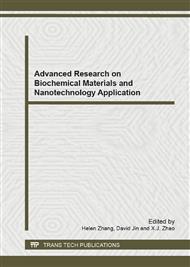p.68
p.72
p.76
p.83
p.87
p.92
p.96
p.100
p.104
Effect of Phosphates on Weight Gain, Thawing Loss and Cooking Yield of Frozen Pollock (Gadus morhua) Fillets
Abstract:
Phosphate is widely used in frozen aquatic products. In this study, frozen Pollock was taken as raw materials, and the effect of different phosphates (sodium pyrophosphate, sodium tripolyphosphate and sodium hexametaphosphate) on weight gain, thawing loss and cooking yield of Pollock fillets were studied. The results showed that with the increasing concentration, the weight gain and cooking yield of sodium pyrophosphate and sodium tripolyphosphate treatment groups increased, and the thawing loss reduced, whereas sodium hexametaphosphate treatment group remained unchangeable. The optimal proportion of sodium pyrophosphate, sodium tripolyphosphate and sodium hexametaphosphate on Pollock fillets was 3:2:3 and the concentration of mixed phosphates was 4%, and the weight gain, cooking yield and thawing loss was 17.1%, 88.6% and 2.7%, respectively
Info:
Periodical:
Pages:
87-91
Citation:
Online since:
January 2013
Authors:
Keywords:
Price:
Сopyright:
© 2013 Trans Tech Publications Ltd. All Rights Reserved
Share:
Citation:


